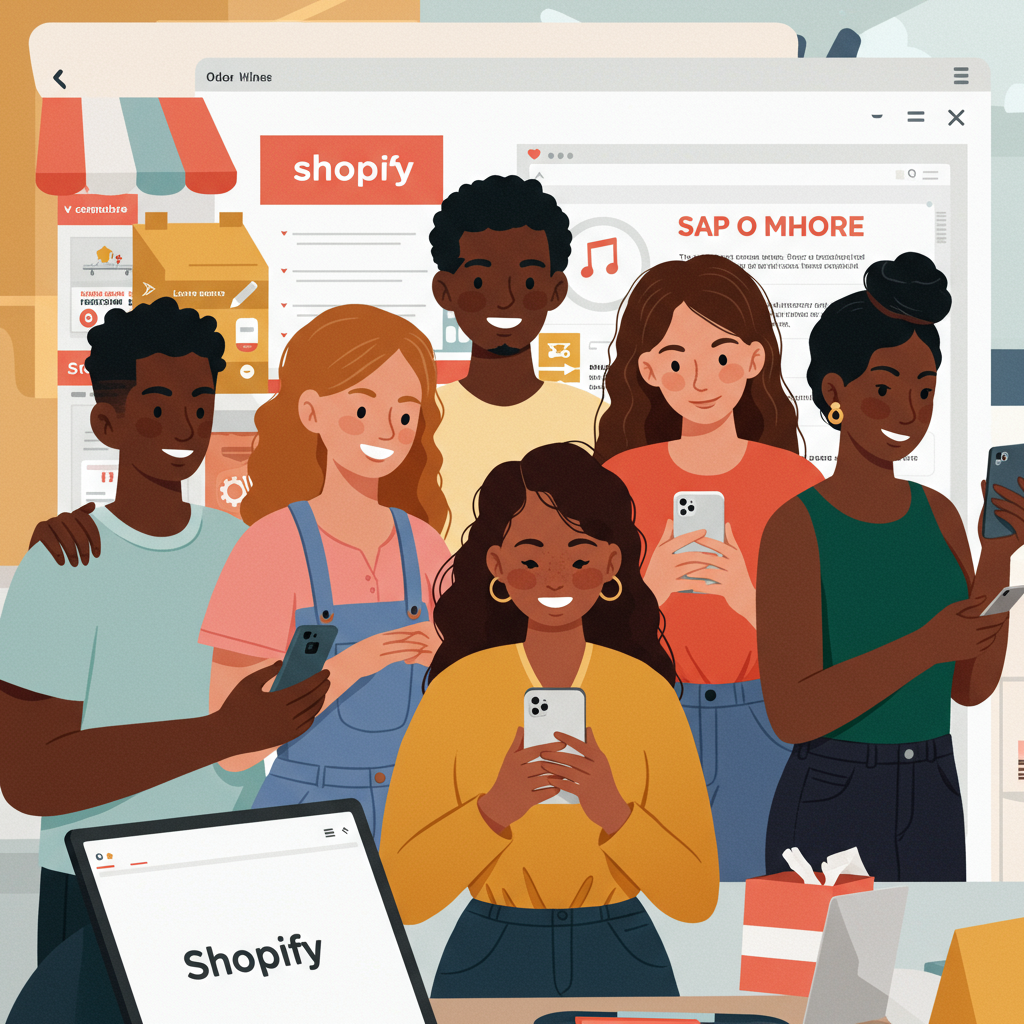Learn how to leverage the power of influencers to boost your Shopify store’s sales and brand presence.
Hello fellow Shopify merchants! I’m here today to talk about a powerful strategy that can truly transform your online store: influencer marketing.
If you’re just starting out or looking for new ways to scale, this approach can connect you directly with your ideal customers.
Influencer marketing, at its core, involves collaborating with individuals who have a dedicated following and can sway their audience’s purchasing decisions.
For Shopify stores, this means getting your products in front of highly engaged communities who trust the recommendations of their favorite creators.
The beauty of it is that it feels less like traditional advertising and more like a genuine endorsement from a trusted friend.
So, why should you, a Shopify merchant, care about this? Well, the benefits are numerous and directly impact your bottom line.
Firstly, it builds immense brand trust and credibility. When an influencer vouches for your product, their audience is far more likely to believe in its value.
Secondly, it drives targeted traffic to your store. Influencers have niche audiences, meaning the people they send your way are already interested in what you offer.
Thirdly, it can significantly boost your sales and conversions, often at a lower cost per acquisition than traditional ads.
Before diving in, the very first step is to define your goals. What do you hope to achieve with influencer marketing?
Are you aiming for increased brand awareness, more website traffic, higher sales, or perhaps gathering user-generated content?
Having clear, measurable goals will guide your entire strategy and help you evaluate success later on.
Next, you need to deeply understand your target audience. Who are your ideal customers? What are their demographics, interests, and online habits?
Knowing your audience helps you identify influencers whose followers align perfectly with your customer base.
Now, let’s talk about finding the right influencers. This is crucial. You’re not just looking for big numbers; you’re looking for relevance and engagement.
Start by exploring social media platforms where your target audience spends most of their time – Instagram, TikTok, YouTube, Pinterest, or even blogs.
Look for creators whose content style resonates with your brand’s aesthetic and values. Authenticity is key here.
Consider different tiers of influencers: nano (1K-10K followers), micro (10K-100K), macro (100K-1M), and celebrity (1M+).
For beginners, I often recommend starting with nano and micro-influencers. They typically have higher engagement rates and more personal connections with their audience.
Their rates are also more accessible, making them a great entry point for smaller budgets.
Once you’ve identified potential partners, it’s time for outreach. This is where personalization makes all the difference.
Don’t send generic templates. Research each influencer, mention specific content of theirs you admire, and explain why you think your product would be a great fit for their audience.
Clearly state what you’re offering: free product, an affiliate commission, a flat fee, or a combination. Be transparent and professional.
When crafting your pitch, focus on the mutual benefit. How will this collaboration benefit *their* audience and *their* content?
After successful outreach, it’s time for campaign execution. Provide clear guidelines but also allow for creative freedom.
Give them all the necessary information about your product, key messaging, and any specific calls to action (e.g., “Shop now at yourstore.com with code INFLUENCER10”).
Always ensure they understand the importance of disclosure, using hashtags like #ad or #sponsored, as required by regulations.
Tracking is vital. Use unique discount codes or UTM links for each influencer so you can accurately measure the traffic and sales they generate.
Finally, measuring success is paramount. Don’t just look at likes. Focus on sales generated, website traffic, conversion rates, and new customer acquisition.
Did you achieve the goals you set at the beginning? Analyze the data to understand what worked well and what could be improved.
Influencer marketing is an ongoing process. Build long-term relationships with successful partners. They can become true brand advocates.
Learn from every campaign. Refine your targeting, adjust your offers, and optimize your approach based on real-world data.
A common pitfall to avoid is focusing solely on follower count. Engagement rate and audience relevance are far more important metrics.
Another mistake is not having clear contracts or agreements. Always put the terms of collaboration in writing to avoid misunderstandings.
Remember, authenticity is your greatest asset. Your audience can spot a forced promotion from a mile away.
By following these steps, you’ll be well on your way to building a successful influencer marketing strategy for your Shopify store.
It takes time and effort, but the potential for growth and brand loyalty is immense.
I truly believe this can be a game-changer for your business.
What do you think about this article? I’d love to hear your thoughts and experiences with influencer marketing!
Now go forth and empower your Shopify store with the magic of authentic connections!






